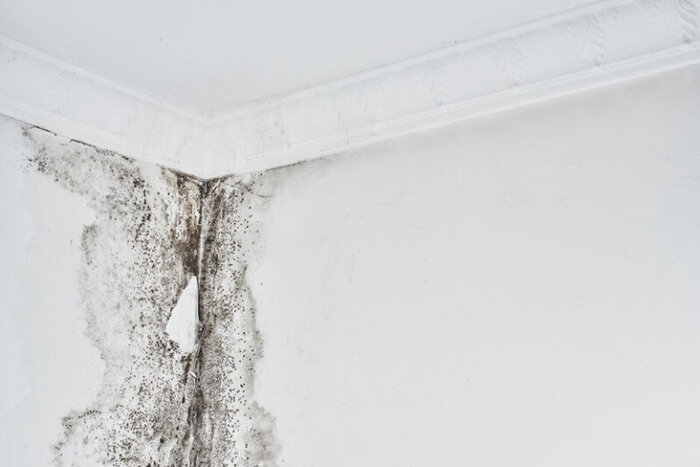
Harmful mold and mildew growth is not only a structural rot issue, it is also an issue for healthy indoor quality. According to the Poison Control Center:
...experts [have] found that being in damp indoor spaces seemed related to respiratory illnesses: nose and throat [upper respiratory] symptoms, cough, wheeze, and asthma symptoms. They also found limited evidence that these environments can be associated with shortness of breath, the development of asthma in people who did not previously suffer from it, and lower respiratory symptoms (coughing, wheezing, chest tightness, and shortness of breath) in healthy children.”
All harmful molds and mildew are considered harmful as a result of the damage it does to your structure and furnishings, as well as the negative health impact that can occur by mold spores circulating through the home.
The most common signs you have a mold issue are:
You can schedule a mold test with your preferred HVAC technician, an insulation contractor, or you can perform a DIY mold test with a high-quality kit sold at your local home improvement store.
If mold is present, contact a specialist to clean and sanitize the area to stop harmful mold in its tracks. Then, repair any and all conditions contributing to mold growth in your home.
If you live in an older home and have not had the insulation replaced in the past 10 to 15 years, it is worth scheduling an inspection with a licensed insulation contractor.
We’ll examine our attic and crawl spaces and let you know if we see any signs of these seven harmful molds that could be hiding in your home.
These large but light spores typically travel into your home during the summer months. They settle on walls and scatter through the ducts. Once humidity levels rise, the rainy months begin, or your house has a leak issue, the mold begins to take off. It prefers a damp environment.
The spores can be inhaled or ingested and are known for causing allergy-like symptoms and/or asthma attacks.
Although this mold is often found on food (a yellow-gray), it’s also just as happy to settle into a damp area in the home. It is so commonly associated with respiratory issues that it has an illness named after it: aspergillosis. It typically causes problems with the sinuses, leading to ear and eye infections.
This mold begins to grow like a white fluffy cloud but then turns olive-green and gray. This is the mold most often connected to that “musty” smell you notice in an older home. It prefers to grow in older or already rotting wood, in attics and insulation, behind wallpaper, and water-damaged attics carpet, walls, or window-frames. It can cause infections in finger- and toenails but can be dangerously fatal for newborn infants and those with weak immune systems.
This is one of the most common types of mold that circulates (and lives in) HVAC ducts and vents. Cladosporium is darker in color, ranging from green and brown to black. One, of its most unfortunate features, is that it is very hardy. It can survive in fairly dry conditions as well as extreme cold.
The good news is that it is less toxic than other molds, although it does cause sinus issues, allergy-like symptoms, and asthma symptoms in those with more sensitive respiratory systems.
Believe it or not, the same penicillium spores that grow the famous antibiotic, penicillin, can take up residence in your home. Even so, the type they turn into medicine is a very specific species. The penicillium most likely to take up residence in damp, water-damaged areas of your home - like attic insulation, walls, and carpet - is more likely to cause respiratory issues than heal them.
Serpula lacrymans make themselves more obvious than some molds because it's a rusty shade of red. As it blooms and takes over walls, ceilings, floors, and even furniture, serpula lacrymans will look as if affected surfaces were sprinkled with rust dust.
Those who are sensitive to it may feel like they have a sore throat or more sneezy than usual, and it can also cause breathing difficulty or asthma-like symptoms.
This is the dreaded black mold we hear the most about. Stachybotrys is everything you think about when you think of mold: black, slimy, and musty smelling. It is the most toxic version of mold, and it needs a super moist environment such as latent leaky pipes, persistent humidity, or condensation that permeates surrounding surfaces, and even your HVAC ducts.
Stachybotrys is the mold most responsible for serious mold allergies and reactions, including difficulty breathing, dizzy attacks and fatigue, difficulty hearing, and chronic sinus infections.
Afraid that one or more of these harmful molds could be hiding in your Bay Area home? Schedule an inspection and clean up with Attic Solutions. You can also give us a call at 1-800-556-9202. We’ve provided professional mold eradication and insulation replacement for Bay Area home and business owners for decades.